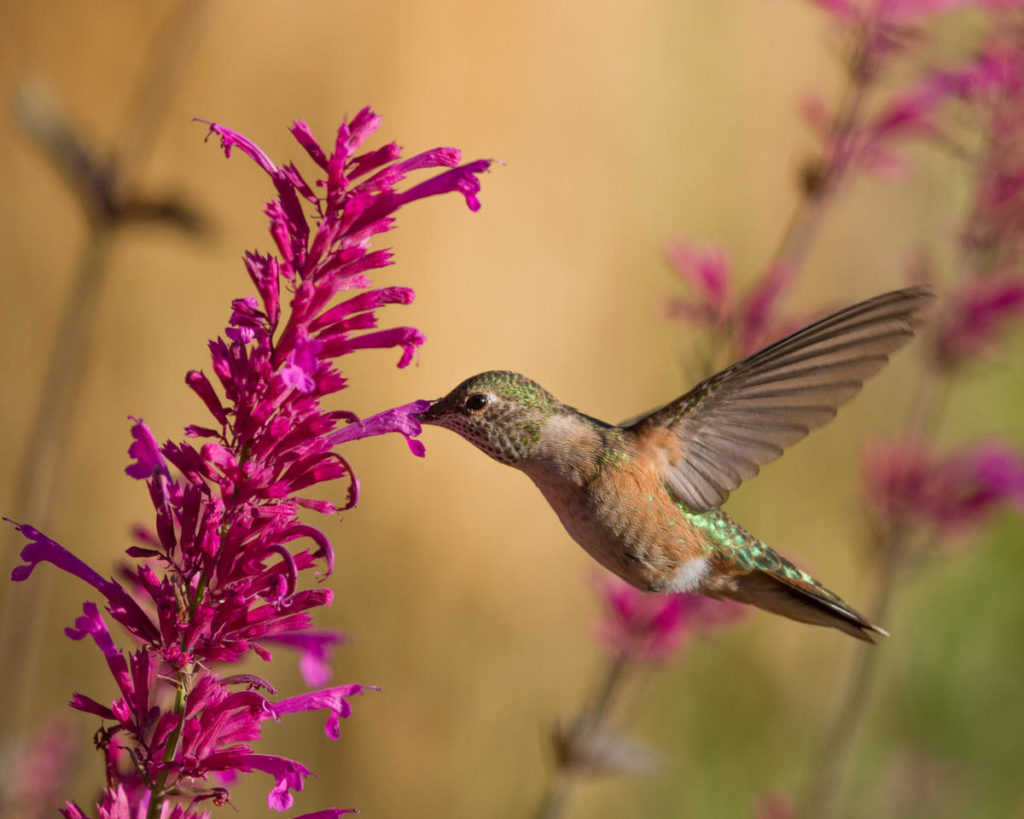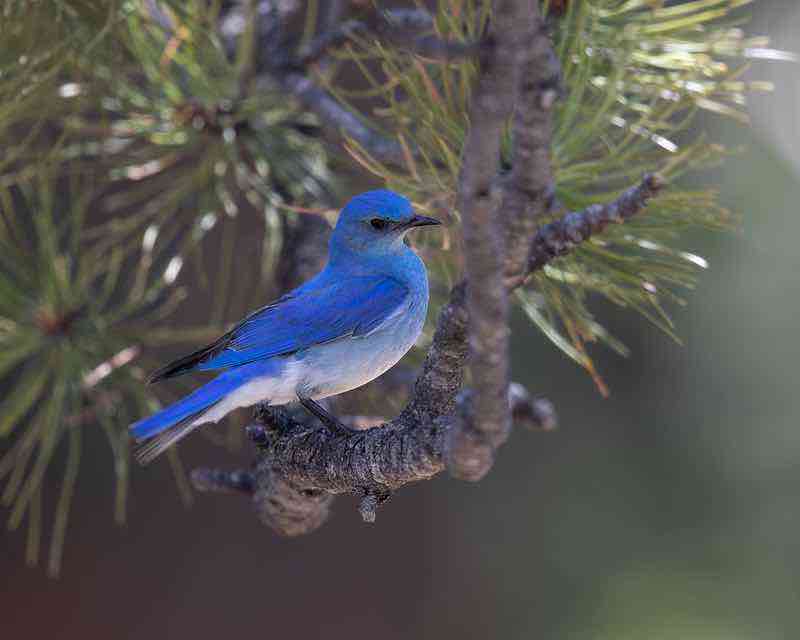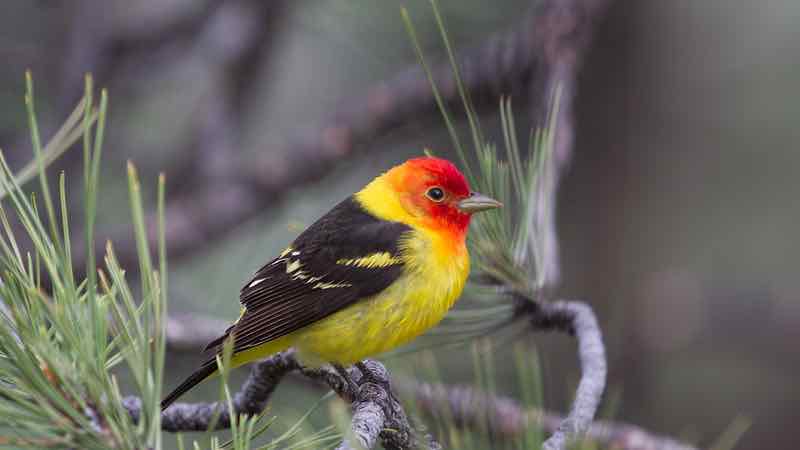Native Plants are for the Birds
From the top down: A broad tailed hummingbird drinks nectar from one of the many speciees of Agastache they favor; a mountain bluebird and a western tanager at rest. Bird friendly yards provide for multiple needs.
All photos courtesy of Kevin Smith.
Native plants are the key to creating a bird friendly yard
Are you interested in attracting birds to your yard? The most effective action you can take is to add native plants. Native plants add real value to your yard – they are beautiful, they are good for the environment, and they provide the right kind of food and shelter, at the right times, for the birds you want to see and support in your yard or neighborhood landscape. In addition to attracting birds, you will be helping counteracting the effects of habitat loss and climate change. All the steps taken to attract birds will also be helping pollinators. What more could you want!
Potential problems with feeders
Recently serious problems with disease transmission at bird feeders have caused massive die-offs for birds in many states, including Colorado. A yard full of native plants will provide healthy conditions for many of our native birds including hummingbirds, Nothern flickers, cardinals, robins, chickadees, woodpeckers, goldfinches, bluebirds, and nuthatches to name just a few, and you will never have to worry about diseases from feeders or about attracting bears, which love free handouts from feeders. Here are some tips to help you get started with natives, and a list of natives especially valuable for habitat.
Create layers of habitat
Where space allows, provide layers of habitat that mimic what occurs in a natural setting. Trees, or even a single tree, are important places for shelter needed for roosting and nesting, as well as safety from predators. Our native Gamble oak (Quercus gambelii) makes an excellent choice. Gambel oak is small enough for a typical suburban yard and can withstand many of the challenges of life in a city.
The next layer is for shrubs, many of our native shrubs give us lovely flowers in addition to fruit, shade, and shelter for birds.
Near the bottom of our layers come the herbaceous plants, meaning the non-woody plants like wildflowers, grasses, and ferns that are such fun to choose. You will want to select a palette of plants that will give a continuous succession of blooms throughout the growing season, ending with a nice blast of fall bloomers that will provide food and nectar for all the birds and pollinators that will either store up for winter or will migrate through to winter homes.
And last of all, the very bottom layer is made up of decaying plant matter that perfoms the important functions of enriching the soil, increasing mychorrizal activity, and providing a home for many invertebrates that birds rely on for food. Ninety six percent of North America’s terrestrial birds species raise their young on insects, not seeds or berrries. Your base layer is a treasure trove for them.
For more information or to become a Habitat Hero, check out our partners and also a one-page summary from Denver Audubon:
AUDUBON ROCKIES
NATIVE PLANTS FOR BIRDS



